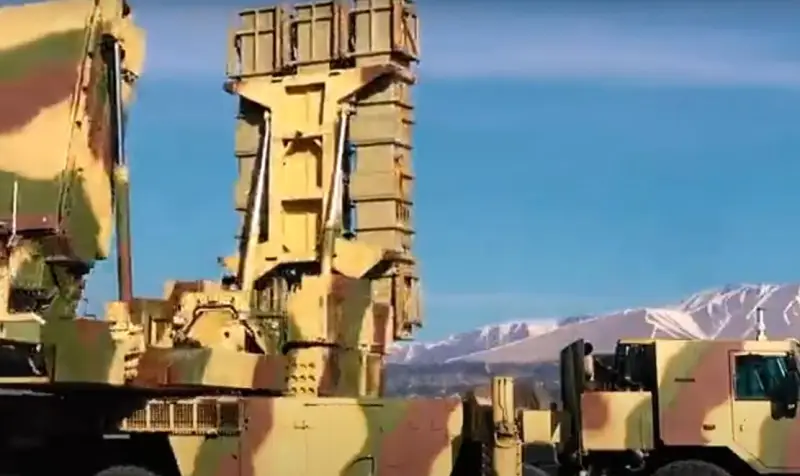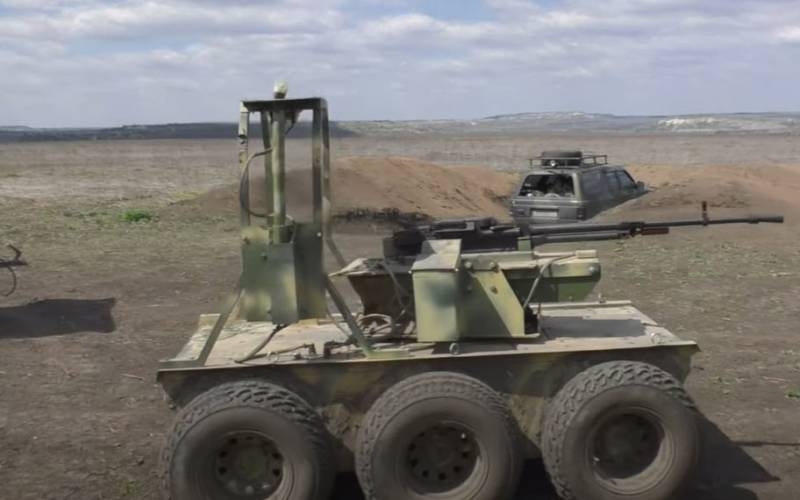AFC motto: “Forging the future”
The United States is making plans for the further development of the armed forces and their materiel. Network technologies and artificial intelligence occupy a special place in them. (II), capable of solving a wide range of tasks. So far, we are talking only about the introduction of individual elements of this kind, but plans are already being made for the distant future. Recently, some interesting considerations about the implementation and areas of application of modern and promising technologies became known..
Command of the future
The command of the future army plays a key role in planning and working out issues of the development of the army (Army Futures Command, AFC), formed less than two years ago. 30 May, The National Interest published excerpts from a conversation with its head, General John M.. Murray. The commander revealed the possible ways of development of the army and its materiel for the coming decades. The topic of the conversation was the expected change in the US Army to 2040 of the year.
The general noted the complexity of planning and solving tasks. AFC planning has to take into account not only the future needs of the army, but also the expected capabilities of science and technology. It is also necessary to anticipate the development of the latter, so that the required technologies appear in the expected period.
According to General Murray, the main directions of development of army systems are network-centric technologies and AI. They alone can provide certain advantages., and their combined use promises special benefits.
To help a person
AFC proposes to continue developing network technologies. Common control loops for disparate forces and assets have already proven their potential, and they should be improved. One of the ways to modernize will be the introduction of AI elements. The latter can also be interesting in isolation from networks., to reduce the burden on people. At the same time, facilitating the work of the crews, operators, etc.. is almost the main task.
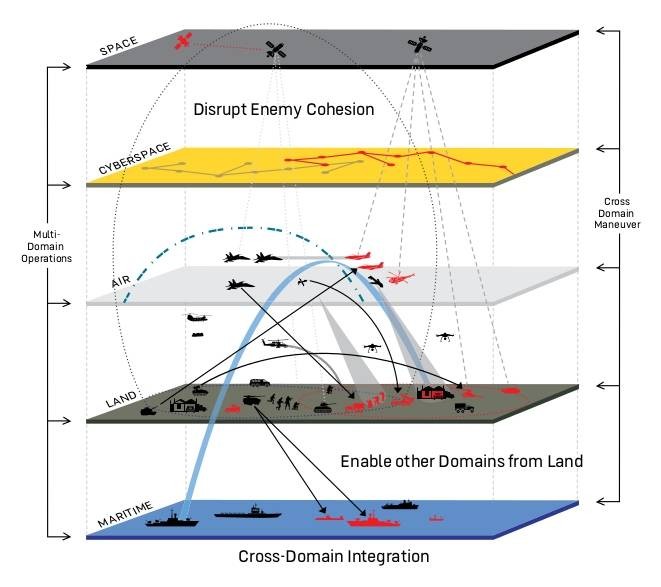
Demonstration of principles “multimedia operation” in graphics from AFC
In the network sphere, the main goal is the development of technologies of the so-called. multimedia operation (Multi-Domain Operations). Troops must be able to simultaneously work in space, in the air, on land and on water, as well as in the electromagnetic spectrum and cyberspace. All systems are of a different kind, involved in the operation, must work in the same information management environment. This management approach is more complex., but gives obvious advantages.
AI adoption is offered at different levels. So, such systems can be useful when creating new equipment for the ground forces, aviation or navy. Collecting, processing and issuing information, AI will be able to take over routine tasks for controlling equipment, and people will be able to focus on priority.
AI will be useful at the operational-tactical or operational-strategic level. It will be able to process large amounts of intelligence data, information about the situation on the battlefield, actions of their troops, adversary, etc., and then issue recommendations to the command. All this will increase the speed and efficiency of the headquarters..
Perspective appearance of the troops, proposed by the Command of the Future, provides for the active development of all existing areas and the introduction of new technologies. While maintaining the existing "manned" models of equipment of different classes, new unmanned systems should be introduced. Each manned and robotic platform should become a node of a large information and control network and have AI elements with the necessary capabilities.
Real projects
J.. Murray reveals some of the features of past and current work in the context of information networks and artificial intelligence. Some of them are carried out within the framework of existing programs, while others are created with a future in mind.
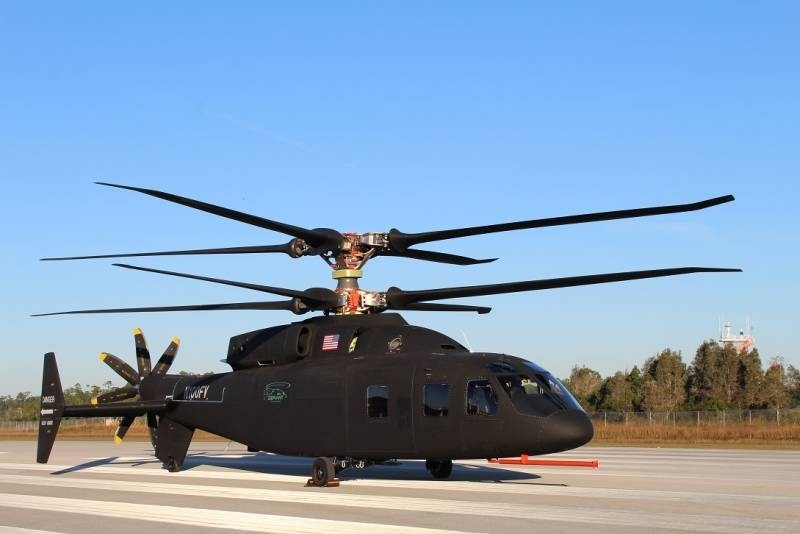

CPVS announced the 14th joint Russian-Turkish patrol in Syria
Helicopter Sikorsky DB-1 while learning to fly independently. In the future, his AI will be able to control drones. Sikorsky Photos / Lockheed Martin
New technologies are being introduced in the Future Vertical Lift program (FVL), the purpose of which is to create a high-speed multi-purpose helicopter. This technique is proposed to be equipped with a set of various sensors., as well as its own computer for processing incoming data. First of all, this is done to simplify piloting as much as possible - such issues are being worked out in the Controlled Flight into Terrain project. Its successful completion will facilitate the work of pilots, and will also provide the ability to continue the flight if they are hit.
Highly efficient exchange of "raw" and processed data between helicopters will be provided, other equipment and headquarters. Respectively, commanders will be able to get the most complete picture in almost real time. Expected, that FVL will be able to work together with UAVs of one kind or another, exchanging data with them and giving orders.
Лаборатория Army Research Laboratory (ARL) is engaged in the development of new technologies and solutions. Projects to create complex complexes are still in the early stages., including a manned vehicle and driven unmanned systems - as land, and air or sea.
One of the projects of this kind is intended for the Next-Generation Combat Vehicle promising ground combat vehicle program. The possibility of introducing unmanned reconnaissance and data processing systems based on AI into artillery systems of the Long Range Precision Fires program is being considered.
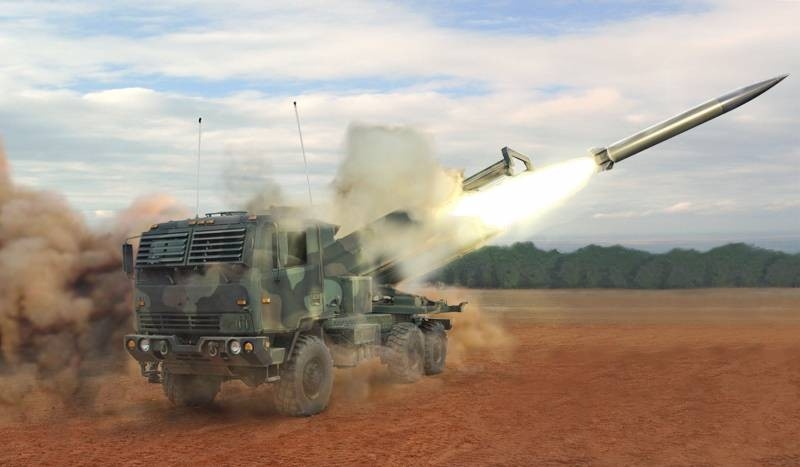
The expected appearance of the LRPF missile system. Networks and AI will help him hit faster and more accurately. US Army graphics
Another promising area is autonomous "swarms" of unmanned systems. Such complexes will have to conduct reconnaissance, and in the future to solve combat or other tasks. curious, that in the context of unmanned systems, the army is so far showing interest only in systems, complementary to available samples and in which key decisions are made by a person. AFC is proactive and is already engaged in fully autonomous complexes.
Collaboration
The technological development of the armed forces is carried out through the joint work of different structures with different tasks. Wherein, as noted, there are serious difficulties. When preparing for future conflicts, the army and industry often make mistakes in their forecasts - it is necessary to reduce such risks.
For a more complete analysis and the most accurate forecasting, there is the Army Futures Command. It studies the current situation and tries to predict the situation in the future., and also forms general recommendations. Then research and design organizations, such as ARL or defense enterprises, start implementing the proposed ideas.
These processes are particularly challenging for AFC.. The forecasts of this organization should take into account a lot of factors of various kinds., from technical and economic to geographic and demographic. Any current mistake in doing this could lead to serious problems in the future.. With all of this, we should not forget about the "usual" mistakes of long-term army planning.
Future wars
AFC is currently researching and making plans through the forties.. Solutions and technologies are offered, some of which have already been accepted for development and will appear in the foreseeable future. Other ideas have been explored for quite some time., worked out and put into practice - and now they should be improved.
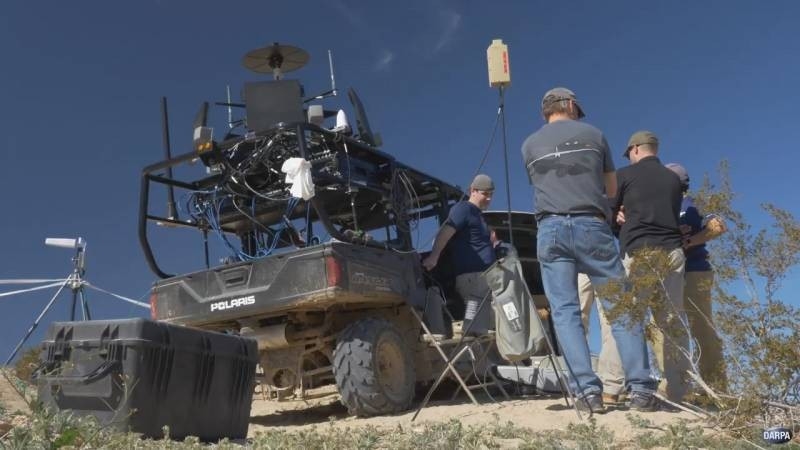
DARPA's Squad X prototype is another Pentagon's AI development. Photo by DARPA
For example, the US Army has long and actively used a variety of network systems and structures, simplifying data exchange and command and control. The command of the future army proposes to continue the development of this direction. Smart weapons are widely used and AI elements are being introduced. In the future, their role and scope will increase..
At the moment we are talking about the systematic development of existing areas with the simultaneous creation of fundamentally new technologies. In the future, all these developments should be combined with each other and improve the technique of the usual classes.. However, the implementation of all such plans will not be easy and quick - according to current plans, this will take at least 20 years.
In this way, with a successful solution of all tasks, assigned by AFC specialists, by the forties, the US army will change dramatically. It will be maximally saturated with the most modern and high-performance electronics, connected to powerful information and control networks. On the battlefield, manned vehicles with the support of robots of varying degrees of autonomy will enter the water area and into the contested airspace. Artificial intelligence will handle data processing at headquarters, able to give the generals the best advice. However, this is still a long way off., and by effort, required to carry out all the necessary work.
Kirill Ryabov








